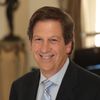Physician burnout.
It is an inescapable and unfortunate problem in the medical community. Medical journals and the popular press have covered this urgent issue extensively in recent years, and numerous medical specialty societies have placed it at the top of their national agendas.
Disturbing data support the angst. Physician depression and suicide rates far exceed those of other populations, with particularly high rates among female physicians (twice national averages). Over the past decade, surveys by the American College of Surgeons found that up to 40 percent of surgeons had significant signs of depression, and nearly two-thirds felt their work did not allow for a rewarding personal life.
One of the costs of this occupational stress has been the early retirement of many middle-aged physicians, which is particularly worrisome in several surgical subspecialties predicted to be in greater demand with the aging of the baby boomer population.
The drivers of burnout are becoming more clear. A recent study in the Annals of Internal Medicine (and funded by the American Medical Association) measured the allocation of time in ambulatory practice among physicians in family medicine, internal medicine, cardiology and orthopedics.
The data were compelling: For every hour in which physicians provided direct clinical interaction, they spent two hours updating electronic health records and doing other desk work. This reality contradicts the simple yet thoughtful recommendation of Shanaree Brown, MD, and Richard Gunderman, MD, PhD. Writing in the journal Academic Medicine, they explained: "To increase fulfillment of physicians, we need to ensure that the intrinsically fulfilling aspects of the work are accentuated, not suppressed."
I think we can agree that the time distribution documented in the Annals study cannot possibly lead to much fulfillment.
Having had the privilege to chair two distinguished departments of surgery for more than 25 years, I have opinions on this subject. And so, I offer a roadmap of sorts to address a problem widely known in the surgical community:
Too many "burnout" discussions have an unfortunate side effect of casting physicians as victims. Yes, doctors have new and important challenges to their autonomy and daily functions, but portraying them as victims seems incompatible with their personalities and personal commitments. I would rather recast the problem in a more positive light: Instead of talking about how to avoid burnout, let's figure out ways to find and sustain more fulfillment from the environments in which physicians find themselves.
Fault does not lie with personal characteristics. Physicians as a group do not lack resilience or "grit." Indeed, the gauntlet of medical school and residencies they pass through testifies to that fact. Efforts to improve their character so they can better withstand the challenges they face are unlikely to work or to be well received. This is not to say that the issue should be ignored. Indeed, candid discussion regarding attitudes and behaviors that might help with stress at work can be effective and uplifting.
The only real solutions lie within the fabric of our institutions. There are substantial limitations to self-improvement strategies as noted by Tait Shanafelt, MD, and John Noseworthy, MD. Writing in the journal Mayo Clinic Proceedings, these researchers argue that maintenance of an engaged and emotionally balanced physician staff requires meaningful organizational changes. To this end, they strongly suggest regular assessment of physician wellbeing, the careful weighing of incentives to avoid overwork and, most important, strengthening the leadership skills in these areas.
Empower caregivers to spend more time tending to patients and less time typing! What is elusive is determining how to accomplish this goal given the demands for documentation now required by the medical-industrial complex. We need to redouble efforts to structure clinic workflows to put doctors and patients together while reducing time spent on documentation requirements. New technologies being pioneered in our innovation center at Cedars-Sinai may help, including enhanced voice recognition programs and other platforms. Another essential ingredient is our determination to provide strong and well-reasoned input to solve these problems.
We know that overloaded doctors are less accessible to patients and less present in their daily interactions. They feel less joy and satisfaction on the job. These factors ultimately can affect patient outcomes. But we also know that solutions to physician burnout are within our reach. We need to recognize the problem and take the necessary steps to restore a sense of balance in the work of those who devote their lives to healing.
